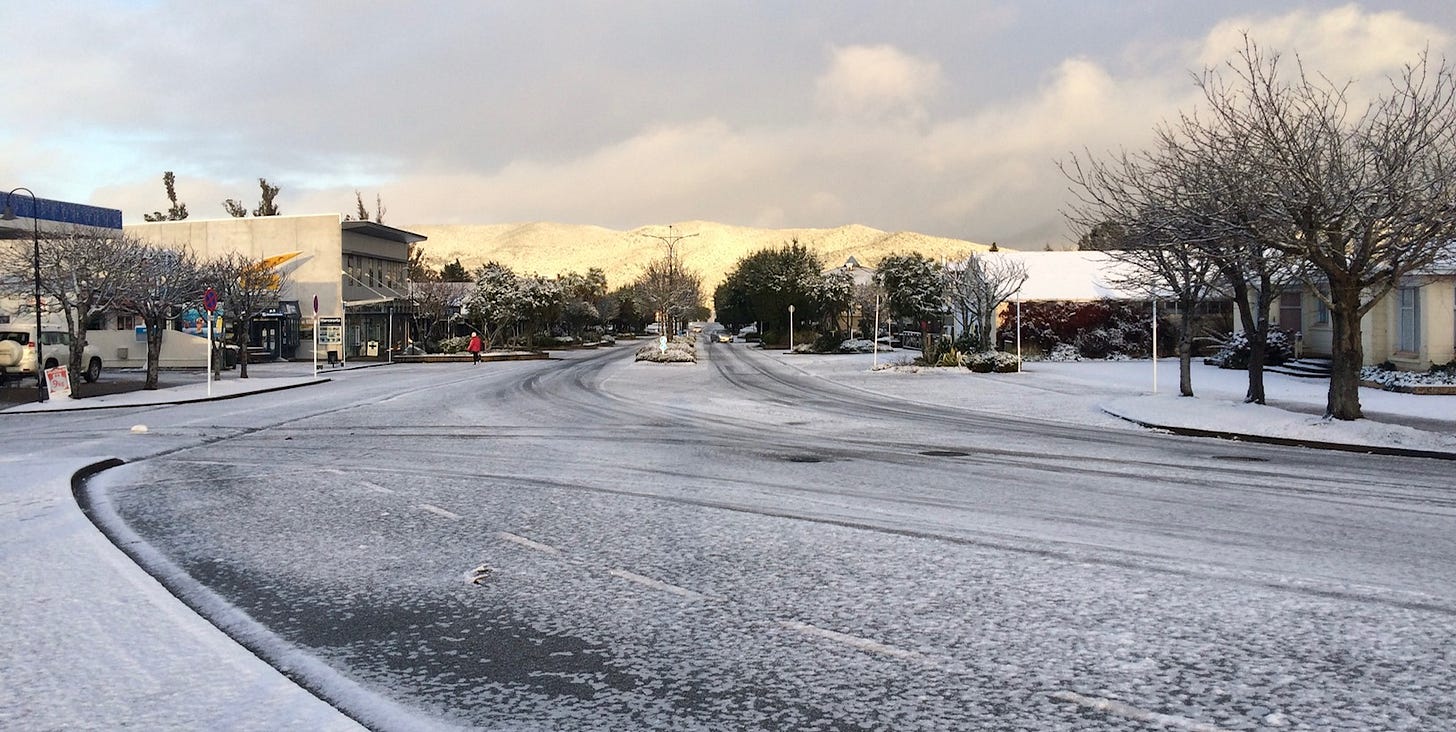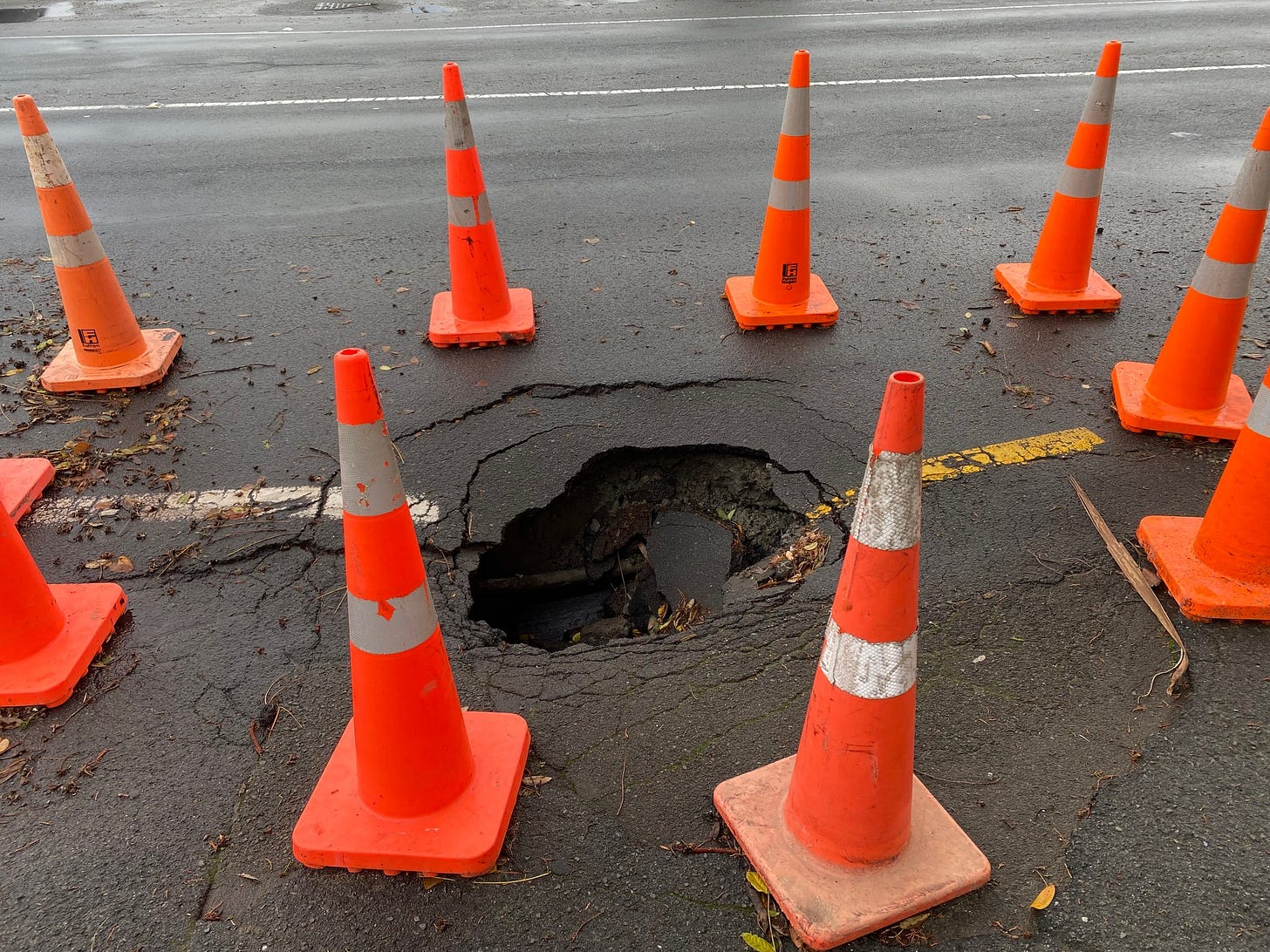Philosophers worry about trolley problems — what actions (or inactions) are morally justified when all alternatives involve death or injury? Paramedics frame similar sorts of problems in terms of triage — allocating their efforts to patients for whom they can make a difference, over those who will die or recover regardless of the paramedic’s attention. But what about choices made by governments?
Many government activities and legislation are designed to save lives, including health interventions, road safety expenditures, earthquake codes, and workplace safety rules. These measures are costly, and therefore warrant analysis of the costs and benefits of doing so. However, there is no uniform approach to such analyses across the New Zealand public sector.
One answer for health interventions
The government-funded BODE3 project, which assesses the cost effectiveness of health interventions in New Zealand, favours those interventions that generate savings of quality-adjusted life years (QALYs) in excess of GDP per capita.1 GDP per capita is the benchmark recommended by the World Health Organisation (WHO). New Zealand medical academics generally adopt the same cutoff figure — currently $72,000.2
Pharmac, which determines which life-saving drugs will be funded, also determines the cost per QALY, but does not employ a cutoff figure because other factors determine its decisions.3 However, in its latest Annual Report (2019/20), Pharmac reports an average of 31 QALYs gained per $1m spent, that is, $32,000 per QALY saved.4 Adjusting for inflation from 2020 to 2022 raises this to $36,000.5
Treasury promotes a cost-benefit analysis model for use in the wider public sector (CBAx), and this includes a central QALY value of $36,000, corresponding to the figure in the previous paragraph.6
The recent Covid lockdowns were undertaken apparently without any formal cost-benefit analysis by government.7 My estimate of the effective cost of the lockdowns (even just in the form of lost GDP) is at least 13 times the standard QALY valuation of GDP per capita.8
And a different answer for road safety
When making decisions on road safety, the Ministry of Transport currently undertakes interventions with a cost per life saved of no more than $4.88m.9 The median age for road-accident victims is 41 years (corresponding to that for the population as a whole) implying an average residual life span of a road accident victim of 41 years. Discounting using the real government bond yield (recommended by Pharmac) of 1.19% per year, the value per QALY is $150,000.10
Equivalently expressed, the value per QALY used in the BODE3 analysis ($72,000) implies a value of $2.33m on the life of a healthy person of average age.11 Similarly, Treasury’s value per QALY of $36,000 implies a value of $1.16m on the life of a healthy person of average age.
Not to mention earthquakes
In respect of the earthquake code, the building standard (NBS) has been set so as to limit the risk of death to one in 1m per year, but does not appear to be based on any formal cost-benefit analysis.12 Nor does the requirement to upgrade buildings below 34% of NBS: in a 2012 CBA produced for MBIE, and concerned inter alia with this requirement, the costs of doing so were estimated at $958m whilst the benefits were estimated at only $25m.13 These benefits comprise lives saved, injuries avoided, and avoided damage to buildings (see page 3 of the report) but are not separately identified. If all related to saved lives, which seems to be estimated at one per year over the 75 year period in the analysis (page 36 of the report), the implied value per life saved would be $25m/75 = $333,000. Allowing for the other benefits, the adopted value per life saved would be less than $333,000.
On the other hand, the government’s decision to require the upgrading of buildings rated below 34% implies that it valued the benefits from doing so at $958m or higher. The benefits in the form of avoided damage to buildings could not exceed the total benefits of $25m, and could be deducted from the costs of $958m, to yield net upgrade costs of $933m to $958m. The avoided injuries would add little to the avoided deaths.14 So, the upgrade decision implies a value per life saved of at least $933m/75 = $12.4m. Allowing for 30% cost inflation since 2012, the figure would be at least $16m today.15
Same lives, different valuations
Thus, across health, road safety, Treasury’s model, and earthquake codes, the value placed on the life of a healthy person of average age by government or its proxies comprise $1.16m in Treasury’s model, $2.33m in the BODE analysis, $4.88m in road safety projects, and at least $16m for building upgrades to 34% of NBS.
Saving the same number of lives at lower cost
This pronounced lack of uniformity provides opportunities for significant cost savings by switching from high-cost to low-cost ways of saving lives whilst saving the same expected number of lives. Consider the last two of these situations, involving substituting road safety expenditures for the building upgrades so as to save the same expected number of lives of healthy people of average age (75 lives). The building upgrades cost $933m*1.3 = $1,213m in 2022 dollars. The road safety expenditure to save an extra life would be $4.88m, and therefore $366m to save 75 lives. The saving from substituting extra road safety expenditures for the building upgrades would then be $1,213m - $366m = $847m, so costs would be cut by 70%. Road safety expenditures are socially funded whilst the cost of the upgrades falls on the owners of the buildings, but the aggregate impact on society is the same.
Even bigger savings would be available by substituting extra health expenditures for the building upgrades so as to save the same expected number of lives of healthy people of average age (75 lives). The building upgrades cost $1,213m in today’s dollars. The health expenditures to save an extra such life would be $2.33m, and therefore $175m to save 75 lives. The saving from substituting extra health expenditure for the building upgrades would then be $1,213m - $175m = $1,038m, so costs would be cut by 86%.
Or saving more lives for the same cost
Expressed alternatively, spending in other ways the same sum as that required to upgrade the buildings would generate expected savings in lives well in excess of that from the building upgrades. For example, spending $1,213m on extra road safety measures would be expected to save $1,213m/$4.88m = 250 lives rather than the 75 from upgrading buildings. Similarly, spending $1,213m on extra health projects would be expected to save $1,213m/$2.33m = 520 lives rather than the 75 from upgrading buildings. These gains in lives saved are multiples of 3 and 7 respectively.
The case for uniformity
There is currently no uniform approach to the valuation of lives in New Zealand public sector activities designed to save lives. The cost of doing so by upgrading buildings below 34% of NBS is vastly in excess of numerous alternatives, including road safety expenditures, health expenditures and the public sector projects that use the CBAx model. For example, abandoning the requirement for upgrading buildings below 34% of NBS would save $1,213m and instead spending an extra $175m in the health sector would save the same expected number of lives, yielding a reduction in costs of 86%. Expressed alternatively, spending the same $1,213m on extra health projects would be expected to save 520 lives rather than the 75 from upgrading buildings. Failure to impose uniformity in this area equates to a colossal lack of productive efficiency.
Governments, unlike philosophers, face a real-world trolley problem. They have finite resources to devote to life-saving interventions, and every feasible allocation of those resources will lead to some loss of life. The best allocation — the one with least total loss of life — requires a uniform “price” on a human life. As the trolley-studying philosophers emphasise, inaction is itself a decision that comes with consequences. The cost of not pursuing uniformity is measured in lives lost.
By Martin Lally, Capital Financial Consultants Ltd.
A QALY is a measure of disease burden, which includes both quantity and quality of life.
GDP in the latest year is $360b (Table M5 from the RBNZ’s website) and the population is 5m.
See page 12 of pfpa-2-2.pdf (pharmac.govt.nz).
Using the PPI for Outputs in Table M1 on the RBNZ’s website, the inflation from June 2020 to June 2022 was 13%.
See box D134 of the “Impacts Database” tab in https://www.treasury.govt.nz/publications/guide/cbax-spreadsheet-model.
The value per QALY is obtained by solving the following equation for V.
Pharmac recommends the five-year average real government bond rate (see page 12 of pfpa-2-2.pdf (pharmac.govt.nz). Since the risks here do not seem to be systematic in the sense of the Capital Asset Pricing Model, the real government bond rate seems a reasonable choice of discount rate. Using yields on the longest term inflation-indexed bond (maturing in 2040) over the last five years (July 2017 – August 2022), from Table B2 on the RBNZ’s website, the average is 1.19%.
Calculated using the equation above with V = $72,000.
For example, if there were three seriously injured people per death, and the former experienced a reduced quality of life of 30% for two years, and the average fatality had a residual life span of 41 years (as with the road safety analysis discussed above), the QALYs lost by not upgrading the buildings (per fatality) would be 1*41 + 3*0.3*2 = 42.8, and the deaths would then account for 96% of these losses.
Using the PPI for Outputs in Table M1 on the RBNZ’s website, the inflation from June 2012 to June 2022 was 30%.








Reply to Martin Lally’s post on NZAE Asymmetric Information 5/10/22 ‘The Economics of Saving Lives’
The promotion of the utilisation of QALYs as a general measure of disease burden to support business decisions for health expenditure or risk management is of concern.
During an incursion of a previously unknown disease (for example COVID-19) when high mortality is evident and the long-term outcome for survivors is unknown a monetary approach using Statistical Value of Life is more appropriate and can be weighted relative to each country’s wealth for immediate comparison globally of the impact on society, including business. Similarly for natural disasters and sudden unpredicted events that may arise due to Climate Change.
Consideration of a person’s satisfaction with life is a personal assessment and should stay in the realm of an individual’s decision. QALY assessments can’t be generalised over a population with any certainty.
People regardless of age or existing health limitations will work to improve their circumstances changing their QALY over time. A QALY estimate today may be irrelevant tomorrow.
There is research for therapeutics that will generate cures or greater amelioration for genetic disorders, cancers, and chronic illnesses for both young and old. Possibilities of interventions in disorders that arise later in life such as Parkinson’s disease are not accounted for and could be underfunded if the application of such research was just considered in terms of QALYs.
Funding decisions made using QALYs do not factor in the personal contribution to society (including taxation) individuals have made during their life or their expectation that treatment would be available to them through the health system.
QALYs may be appropriate to use to inform a Cost Effectiveness Analysis but the moral hazard must be borne in mind, including determinations related to certain sectors of society such as the disabled, indigenous populations, women and the aged.
Gail Duncan, Independent Economic Researcher